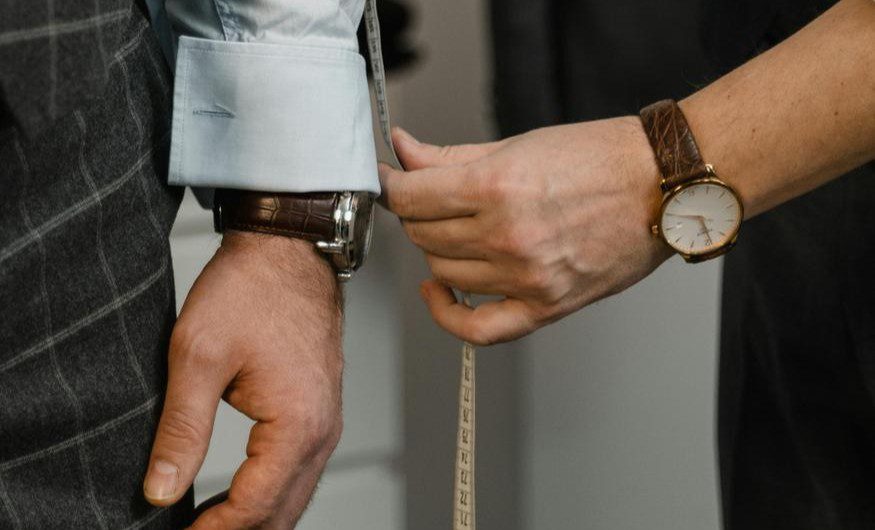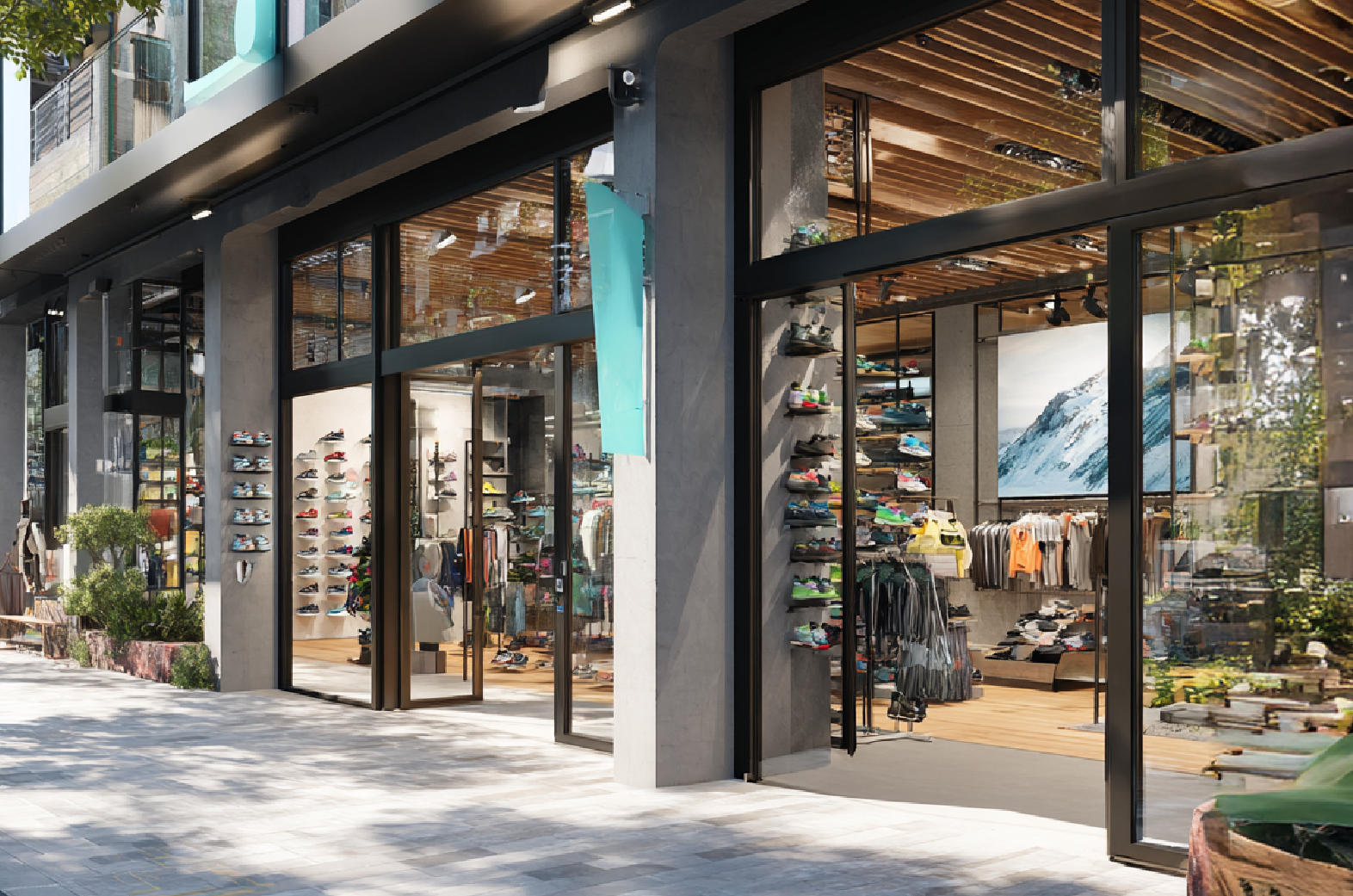Less is More or Bigger is Better? It’s Both
How Selling Mini and Advertising Maxi Creates Marketing and Merchandising Appeal in Luxury

The Dual Path of Miniaturization and Maximalism
The luxury market faces significant challenges: economic uncertainty, tariffs, and inflation. According to HSBC, luxury goods are now 55% more expensive than in 2019, pricing many items beyond reach for aspirational customers. Middle-income shoppers, who spend less than €2,000 annually on luxury items, represent over half of all global luxury purchases (Boston Consulting Group). While ultra-high-net-worth individuals continue spending, the loss of the crucial middle-income segment significantly impacts brand performance. In response, we’re observing two juxtaposed trends that, while expressing themselves as opposites, appeal to a similar sentiment: creating memorability, wonder, surprise, and the ability to stand out.
First, luxury brands are recapturing aspirational customers by miniaturizing their offerings. While common with handbags for over a decade, brands are increasingly producing “micro” versions of coveted products—from beauty items to scarves and charms—and even offering “mini-treatments” in the wellness sector. The idea is simple: offer products at lower prices by downsizing them.
Simultaneously, in marketing and branding, we’re seeing a new wave of maximalism, with scaled-up, blown-up product versions that serve as powerful tools for stunning observers and customers. This trend aligns with unconventional tactics used in “guerrilla marketing,” leveraging enchantment through unique visual propositions and immersive experiences so unexpected that they become conversation pieces and shareable social media moments.
The Miniaturization Trend as a Strategic Response
Luxury brands embrace miniaturization as a key strategy to offer entry-level price points and attract a wider audience. Gucci offers $440 pet leashes and $200 logo sticky notes, while Louis Vuitton features $360 card holders and $395 bracelets. This trend is particularly evident in beauty:
- Target’s travel-size beauty sales have more than doubled in three years, with over 300 mini products available
- Glow Recipe’s miniature sales reached $22.7 million in H1 2024, representing a 110% year-on-year increase
- Google searches for mini beauty sets have risen 29% year-on-year, with searches for mini fragrance sets up 109.8%
Driving Forces Behind Miniaturization
Lower Barriers to Entry: The Mini Everything
Miniaturization significantly increases accessibility to luxury by offering smaller, more affordable products, lowering entry barriers for aspirational customers. This strategy particularly appeals to Gen Alpha and Gen Z, who show less brand loyalty and greater openness to exploring different brands.
Individuality and Low-Commitment: The Mini Bottle
Today’s consumers, especially younger generations, value individuality and self-expression. Mini products provide a cost-effective way to curate unique styles and express personal taste.
The popularity of mini beauty products reflects Gen Z’s desire for multiple forms of expression rather than commitment to “one signature scent.” These products allow consumers to sample premium brands with minimal financial commitment, satisfying their desire for experimentation. Examples include:
- Hermès offers a set of four small bottles of individual scents at $172, well below the price of a regular-sized scent.
- Brazilian brand Sol de Janeiro offers discovery sets of minis priced at $34.
- Kayali offers a $25 discovery set of 8 layerable scents.
- Drunk Elephant offers 15ml creams priced at $21, as well as travel-friendly sets.
- Charlotte Tilbury offers a full-face routine discovery set priced at $60.
Experimentation and Discovery: Beauty Subscription Boxes
Beauty subscription boxes thrive on monthly unboxing experiences, offering customized product selections across categories. According to Grand View Research, the US beauty subscription box market ($1.22 billion in 2024) is projected to grow at 21.6% CAGR from 2025-2030, driven by demand for personalized experiences.
Mini-products in subscription boxes enable low-risk brand exploration, encouraging consumers to try different formulas and shades they might otherwise overlook. This particularly appeals to younger demographics eager to discover perfect products.
Cuteness and Collectability: Mini Charms and Bags
The “cute” aesthetic resonates strongly on social media platforms, which drive beauty industry trends. This “comforting” aesthetic also appeals to consumers during uncertain times, providing emotional security.
Mini products resonate with younger demographics through their aesthetic appeal and collectability, making them highly shareable on social media. Beyond visual appeal, they serve as powerful marketing tools and entry points to brands.
Bag charms exemplify micro-luxury, offering high-end brand experiences at a fraction of full-sized product costs. Miu Miu’s $800 charms contributed to a 93% sales increase in the first half of 2024, with charm searches surging 150% over six months according to Lyst. Jacquemus has become synonymous with the micro-bag trend through its viral Le Chiquito bag. Despite being impractical, these tiny bags perfectly capture the “cute” aesthetic while powerfully symbolizing brand status.
Time Efficiency: The Mini-Facial and Mini-Scan
In today’s fast-paced world, time constraints drive demand for express self-care options. Shorter treatments (under 30 minutes) offer convenient solutions for busy consumers. Glowbar exemplifies this trend with 30-minute facials that utilize high-end ingredients, delivering results at a lower cost than traditional services.
Preventative wellness is evolving through quick health assessments. Neko Health’s one-hour Body Scan in Marylebone, UK utilizes proprietary technology with over 70 sensors to assess various health indicators, ranging from skin cancer risk to cardiovascular disease predispositions.
Maximalism in Marketing: Standing Out in a Sea of Sameness
The use of oversized props in marketing represents a deliberate shift away from minimalism, embracing a maximalist approach that prioritizes visual impact and experiential engagement. The effectiveness of this maximalist approach lies in its ability to:
- Create a sense of wonder: Giant props disrupt expectations, fostering amazement
- Simplify brand messaging: These installations distill a brand’s identity into a single, recognizable visual
- Command attention: The sheer size ensures they stand out in crowded environments
- Foster playfulness: Oversized replicas inject humor and lightheartedness into brand interactions
- Drive user-generated content: These props are irresistible photo opportunities, encouraging social media sharing
- Differentiate brands: Giant props help brands distinguish themselves, acting as visual landmarks
While this marketing phenomenon originated in the USA with icons like the Oscar Mayer Wienermobile and KFC’s rotating bucket signs, it has now been widely adopted globally. Oversized marketing experienced a decline with the rise of digital platforms, but as digital spaces became saturated, a resurgence of large-scale physical props has occurred, now strategically combined with digital initiatives to create immersive experiences.
Trendsetters in Oversized Advertising
Marc Jacobs
Marc Jacobs deployed an enormous inflatable tote bag on a Manhattan street, drawing significant attention from passersby. This eye-catching display quickly became a social media opportunity, illustrating the potential of physical, oversized props to create viral moments through real-world interaction.
SKIMS
Skims launched a new swimwear collection with a high-impact campaign featuring a 60-foot inflatable of Kim Kardashian in Times Square. This bold installation successfully sparked widespread social media discussion while amplifying the brand’s visibility and driving consumer engagement.
Rhode
Hailey Bieber’s beauty brand has masterfully leveraged visual spectacle by deploying monumental replicas of its signature lip treatment tubes and blushes in advertising imagery, transforming everyday items into captivating, larger-than-life installations.

Louis Vuitton Giant Travel Trunks
Inspired by the oversized “luggage scaffolding” used during the renovation of their Champs-Elysees store in Paris, Louis Vuitton’s New York City flagship renovation features a 16-story facade that replicates its iconic steamer trunks. This elaborate exterior uses 3-D scans and real metal hardware to achieve a hyper-realistic effect during the store’s reconstruction.
Jacquemus
For its 15th-anniversary celebration, Jacquemus launched a viral marketing campaign using surreal and oversized props, such as a giant lemon wedge adorning its Capri storefront and digitally manipulated images featuring unconventional scenarios. These visually arresting elements have generated significant online buzz.
Adidas Dubai
Adidas created a highly impactful campaign at the Dubai Marathon by installing a colossal sneaker replica that disrupted city traffic and captured widespread attention, blending physical spectacle with digital innovation.
J.Crew Magazine
To commemorate the relaunch of its iconic catalog and celebrate its newsstand opening at 88 Prince Street in NYC, J.Crew created a visually captivating campaign featuring a model interacting with an enormous physical replica of the magazine, transforming a traditional product announcement into an experiential marketing moment.
Conclusion
The juxtaposition of miniaturization and maximalism in luxury represents two sides of the same strategic coin, both addressing critical challenges in today’s market. While seemingly contradictory, these approaches share a common goal: creating memorable consumer experiences and differentiating brands in an increasingly competitive landscape.
Miniaturization serves as an accessible entry point to luxury, allowing brands to maintain exclusivity while broadening their customer base. By offering smaller, more affordable versions of signature products, luxury houses can engage with younger demographics without compromising their premium positioning. This strategy proves particularly effective during economic uncertainty, when middle-income shoppers—representing over half of global luxury purchases—become more price-sensitive.
Simultaneously, maximalism through oversized marketing installations creates powerful, immersive brand moments that cut through digital noise. These larger-than-life displays generate organic social media content, transforming observers into active brand ambassadors. In an era where consumer attention is increasingly fragmented, such bold visual statements create lasting impressions that standard advertising cannot achieve.
Both strategies reflect the evolving relationship between luxury brands and consumers. Today’s luxury market demands more than just quality products – it requires emotional connection, experiential engagement, and flexibility in how consumers access brands. Whether through miniaturized products that democratize luxury or maximalist displays that inspire wonder, successful brands are finding innovative ways to remain relevant while preserving their essential DNA.
The dual approach of “thinking small” through product miniaturization and “thinking big” through marketing maximalism appears to offer a compelling future proposition for successful engagement with various demographics and customer groups in the luxury sector.



